
This might sound jarring: sales reps spend only about 35% of their time actively selling.
But it’s not entirely a distraction problem. Sales reps waste a lot of time navigating sales tools and handling administrative tasks, like emails. A better suite of sales enablement tools goes a long way toward solving this problem.
With the right sales enablement tools, you can feed your sales reps better leads, help them use their time more efficiently, and ultimately increase your team’s numbers. We curated 34 of the best sales enablement tools to help you blow this quarter’s targets out of the water.
But first:
It’s worth noting that sales enablement tools are distinct from sales tools.
A sales tool, such as a CRM system, helps sales reps manage their customer interactions. Sales enablement tools streamline all the activities that happen on the backend, before the sales rep gets on the phone.
Sales enablement tools streamline the analysis, planning, training, and lead filtering that goes into building a successful sales framework and empowering sales teams.
Of course, there’s some gray area between sales tools and sales enablement tools. But they’re not entirely interchangeable. And understanding the difference will save you from going on any wild goose chases in your quest to track down tools to help your team.
With that, here are our picks for the best sales enablement tools on the market.
Training is one of the most important parts of a sales enablement manager’s job. Sales training tools help you build quality training programs. They also help your sales reps complete those programs faster, remember more of what they learned, and more readily apply it to their work.
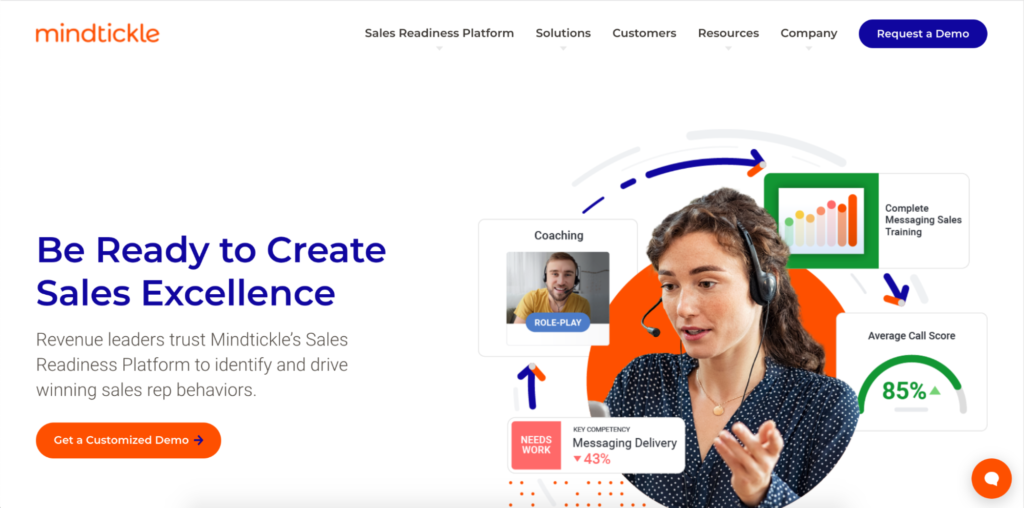
MindTickle uses CRM data to identify sales behavior that works, what each sales rep does well, and where sales team members can improve.
Then, MindTickle helps you create custom training and coaching programs for each team member. This sales training tool is especially powerful for sales enablement teams who want to build data-driven training programs and sales frameworks.
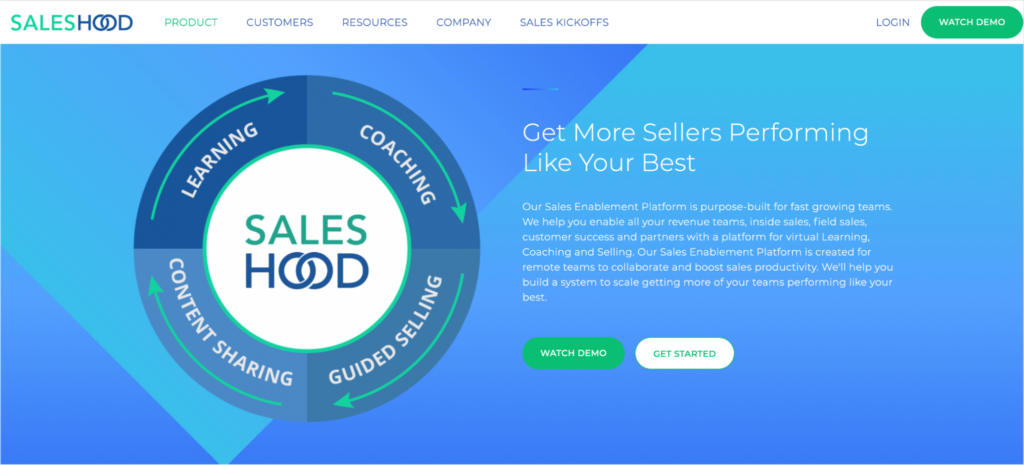
SalesHood is a sales training tool that’s built specifically for sales enablement teams. As such, it has tools for every aspect of sales training.
SalesHood has a training platform where sales enablement teams can share training content and sales representatives can complete that training. Then, this sales enablement tool goes one step further with tools for doing individual coaching and guided sales.
SalesHood gives sales enablement professionals tools for every type of training, from remote to hands-on.
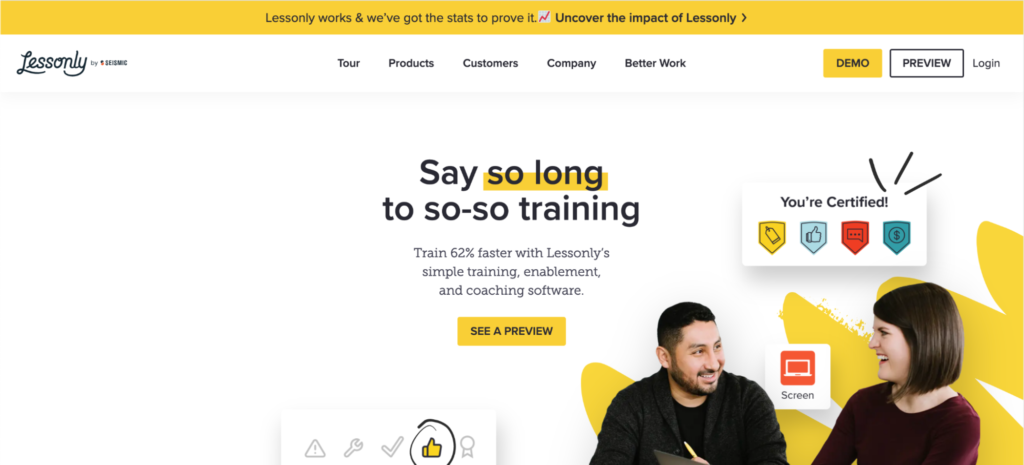
Lessonly is not a sales-specific tool, but it’s an incredibly capable training platform that works for sales as well as it works for other teams.
Lessonly gives you the power to easily create and deliver training packages. You can also upload your own reference documents and training videos. Then you can monitor training progress, give feedback on assignments, and even award certificates for completion.

Biteable Teams is a user-friendly platform that gives anyone the power to create professional quality videos in minutes. And if videos aren’t already part of your sales training program, they should be. Research suggests people remember 95% of a message delivered through video, compared to only 10% via text.
Biteable’s robust and ever-growing library of video templates takes the guesswork out of the process. A collaborative workflow makes it easy to get approvals and add your videos to your training program.
Activate your audience with impactful, on-brand videos. Create them simply and collaboratively with Biteable.
Sales forecasting tools help you spot trends in historical sales data and use those trends to allocate sales resources, prepare for market shifts, and set realistic growth targets.
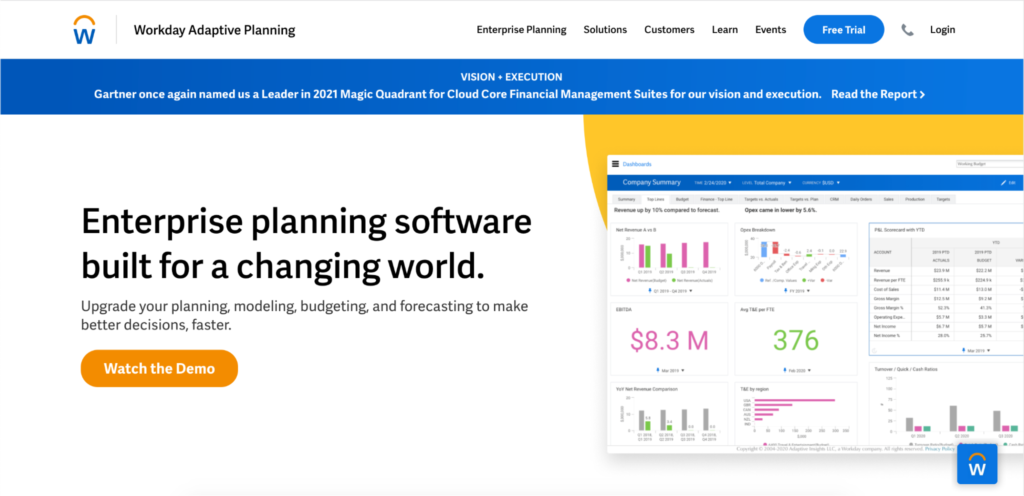
Adaptive Planning has all the traditional sales forecasting tools, but they also go one step further with analytic tools that help leadership connect sales trends to strategic decisions.
Using Adaptive Planning, sales enablement teams can run scenario analysis to spot the impact of past strategic decisions and do predictive planning to see how sales enablement processes might impact sales performance.
Of course, no predictive tool is ever perfectly accurate. But Adaptive Planning gives you the power to crunch the numbers and help verify your intuition.
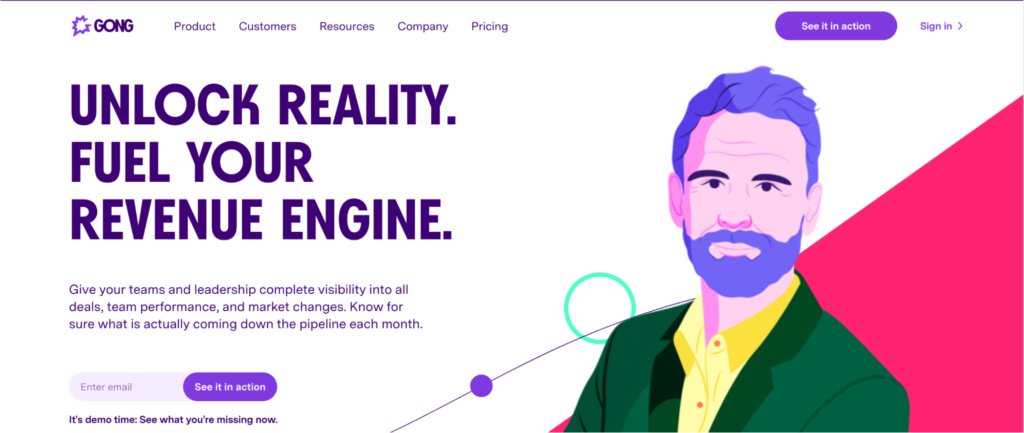
Gong gives more specific guidance than most other sales forecasting tools. Gong collects and analyzes sales data down to an incredibly granular level, which produces insights as specific as how to reduce sales rep talk time on sales calls by a certain percentage.
The only downside is that Gong can generate a ton of guidance. So much guidance that it can be overwhelming. And it’s important to have an implementation strategy that manages all the actionable insights you’ll get from Gong.
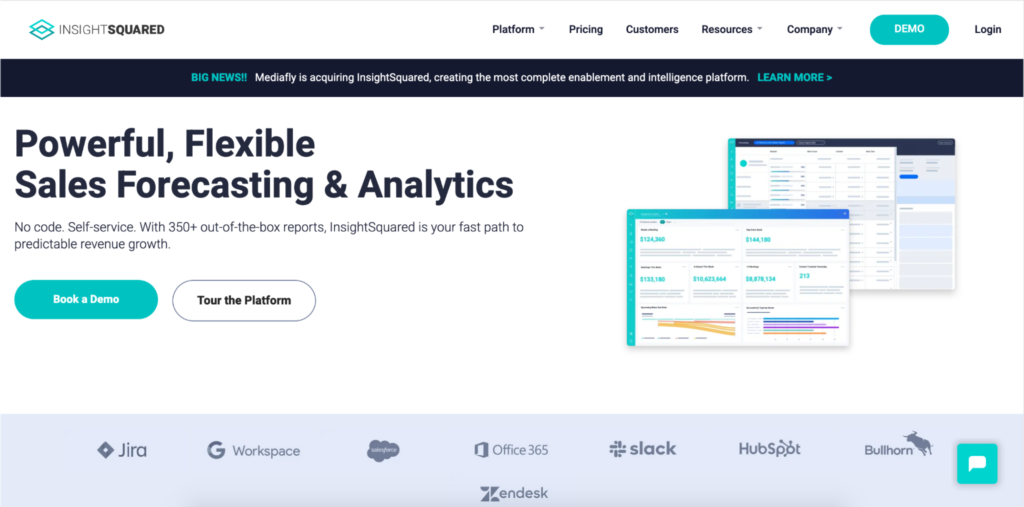
InsightSquared does the traditional sales forecasting work of collecting and analyzing historical data. But this tool also collects specific sales activity data from your CRM to identify which sales actions produce the best results.
Essentially, InsightSquared collects and analyzes data to help the sales enablement team be proactive when they coach their reps.
However, InsightSquared does rely on CRM data to work. So it’s important to automate as much CRM data collection as possible and make sure your sales team keeps up on all their CRM entries.
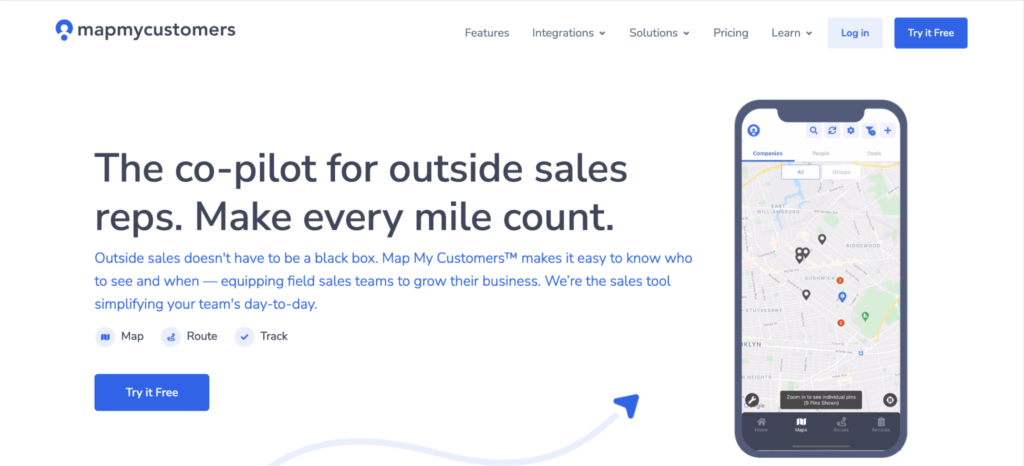
Map My Customers is specifically designed for field sales teams that have to make in-person contact with prospects. As the name suggests, Map My Customers helps field sales teams create the most efficient routes and make more visits.
But Map My Customers also has the same backend sales forecasting capabilities as the other tools on this list, so you can use it to spot trends in sales data, identify the most valuable customer personas, and optimize sales processes.
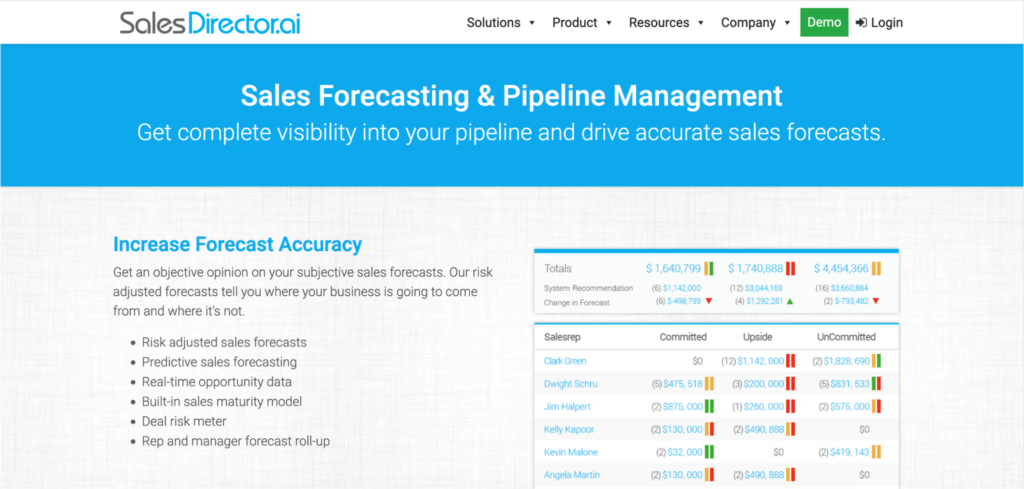
Most sales forecasting tools use some machine learning and intelligent data processing. SalesDirector.ai uses AI for the traditional pattern recognition and data analysis, but it also uses AI to create a better user experience by making the interface more conversational.
Additionally, the data insights that SalesDirector.ai delivers are designed to serve as a sort of sales assistant. The insights you get from this AI sales forecasting assistant help you validate your suspicions, generate better ideas, and identify when it’s time to make a pivot in your sales strategy.
As a sales enablement pro, you play a crucial role in helping your reps find, connect, and engage with quality leads. Sales prospecting tools are a crucial part of this.
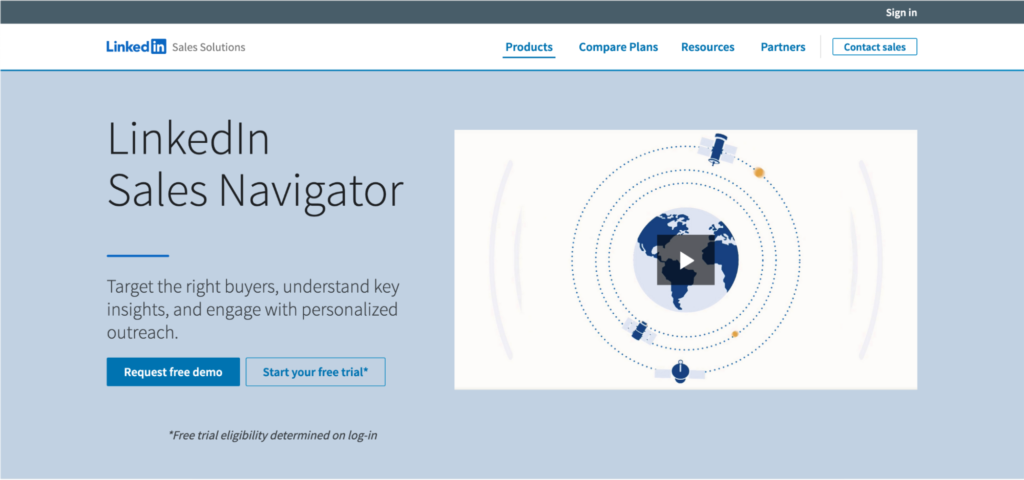
The LinkedIn Sales Navigator is hands-down one of the most granular lead-generation tools on the market.
It’s true that using the LinkedIn Sales Navigator is akin to running ads on other social media platforms. However, since LinkedIn is also a job search platform, there’s far more professional data available about LinkedIn users.
You can use this professional data for lead filtering, which is incredibly useful for sales teams, especially in business-to-business sales.
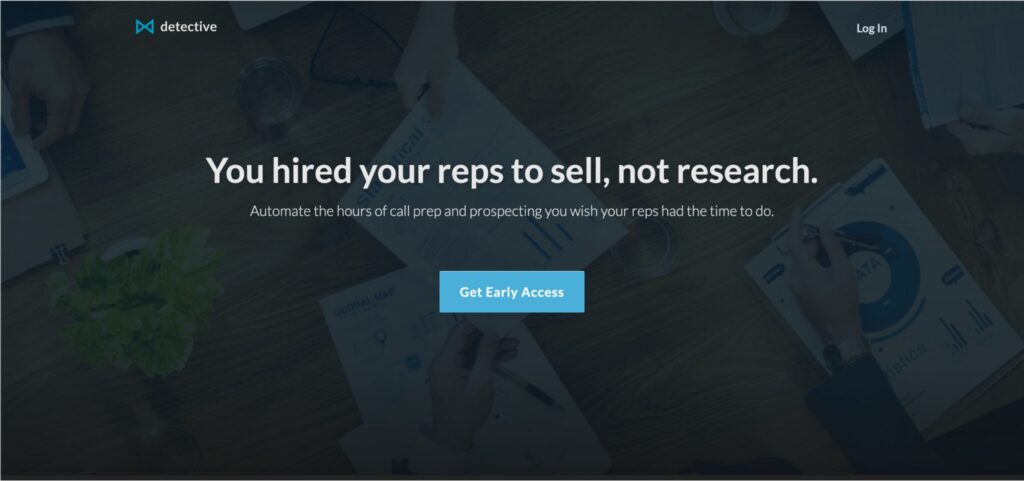
Detective is specifically designed to automate the research of prospecting, without adding an entirely new layer to your sales pipeline.
Detective works in a browser, and it essentially combines tens or hundreds of Google searches into one single search. This might sound overly simple. But consider how much time your sales team spends prepping for sales calls. Detective drastically reduces that prospect research time.
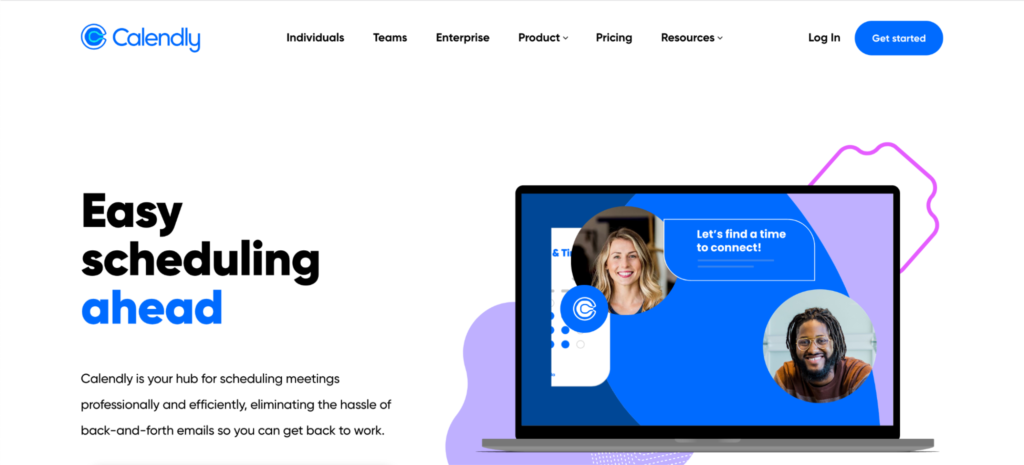
At its core, Calendly is scheduling software, so it works best as a prospecting tool for sales teams that use inbound marketing to gather and qualify leads.
The benefit of Calendly is that it automates the scheduling process. That way your sales team’s calendars fill up on their own. All your reps have to do is show up on time.
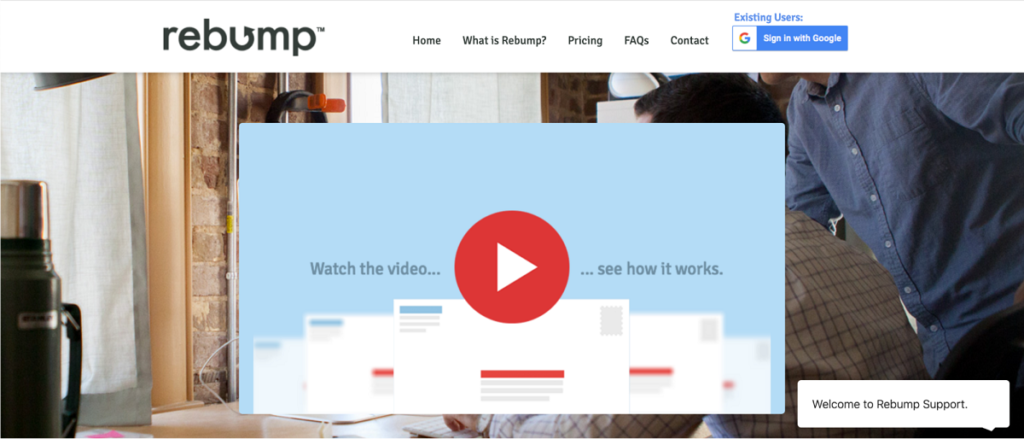
Rebump is a simple tool for creating automated email flows. It’s a good option for sales teams that do a lot of email outreach.
When a sales rep sends an email, Rebump sends automated follow-up emails at specified intervals and stops sending future emails if the recipient indicates they want to opt out.
Of course, most email marketing software can send automated email flows. But the nice thing about Rebump is that it’s specifically designed for sales teams, rather than marketing departments. It’s simple and easy to navigate, without any functionality that sales teams don’t need.
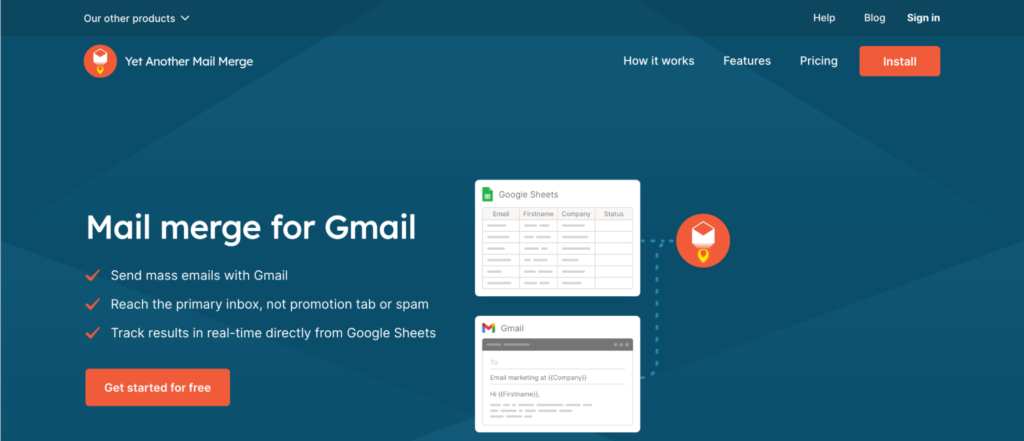
Yet Another Mail Merge is a great prospecting tool for sales teams that do a lot of cold email outreach. It’s a simple tool that sends emails in bulk and automatically tracks responses in a spreadsheet.
Essentially, Yet Another Mail Merge automates the administrative aspects of cold emailing. That way your team can do more outreach and reliably follow-up with contacts that express interest.
Sales management tools focus on making your sales team more efficient by managing data, identifying the best sales opportunities, and helping managers coordinate team efforts.
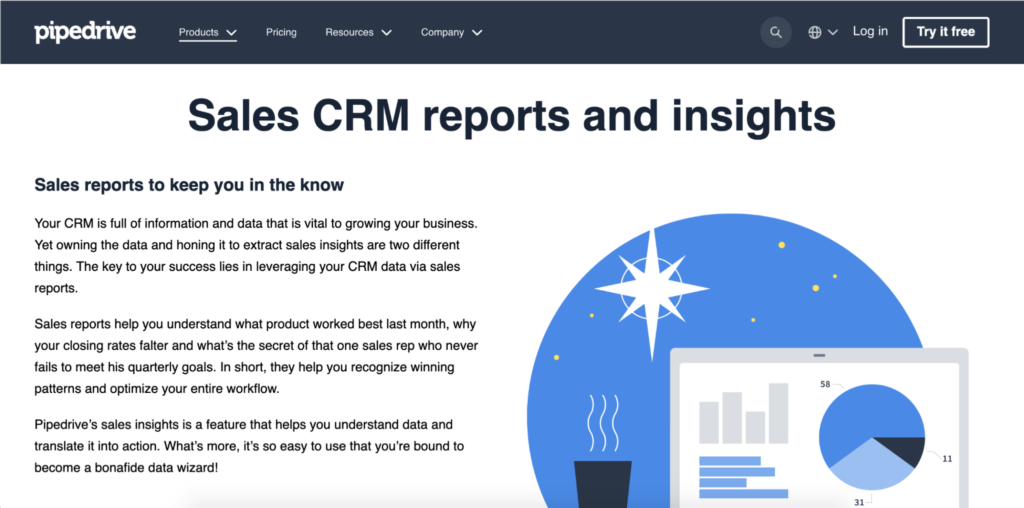
Pipedrive is a meat-and-potatoes sales management tool. It curates and analyzes your CRM data, creates reports, and helps sales managers keep their teams moving.
Pipedrive’s main differentiator is that it’s incredibly easy to use. It may not have any crazy data analysis or scenario modeling. But the software is lightweight and requires very little time to work with data and extract insights.
This is a good option for sales enablement managers that already have a complex technology stack or who have another tool that handles some of the sales management duties.
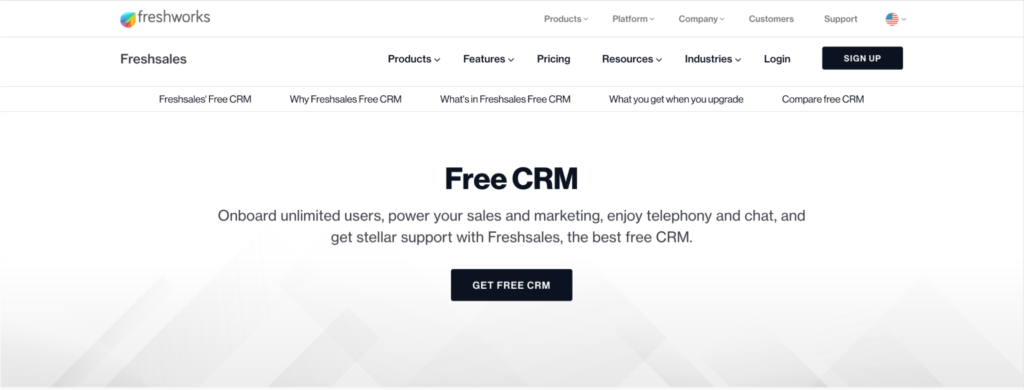
Freshsales is a solid all-around CRM system for managing sales. It does all the sales management basics well, and it particularly shines in a couple areas.
Freshsales offers excellent data curation. It collects a ton of contact information and makes it simple to see all of that information for quick lead scoring.
The other nice feature is that Freshsales also has integrated telephone and chat functionality. You may not use them if you have other services for these channels, but it’s nice to have everything together in one place.
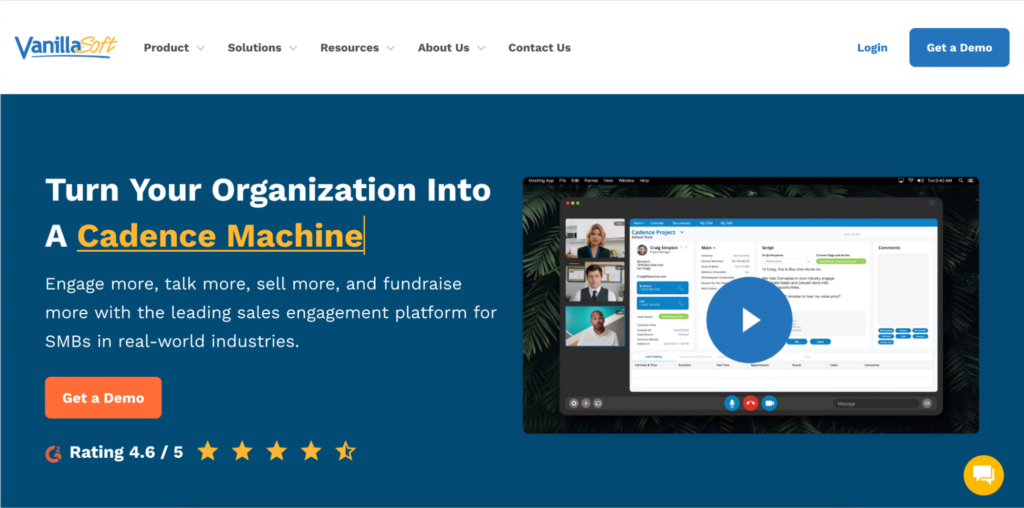
In addition to having all of the standard CRM capabilities, VanillaSoft has a couple of unique and helpful features: logical branch scripting and lead prioritization.
Logical branch scripting creates adaptive scripts that guide sales reps through calls based on the responses from the prospect. This makes sales calls much smoother and keeps reps from getting flustered if the conversation starts to wander a bit.
Additionally, VanillaSoft can rank leads by quality and tell sales reps which lead to contact next, based on the likelihood of closing a deal with that lead. This is a great tool for improving sales team efficiency and time management.
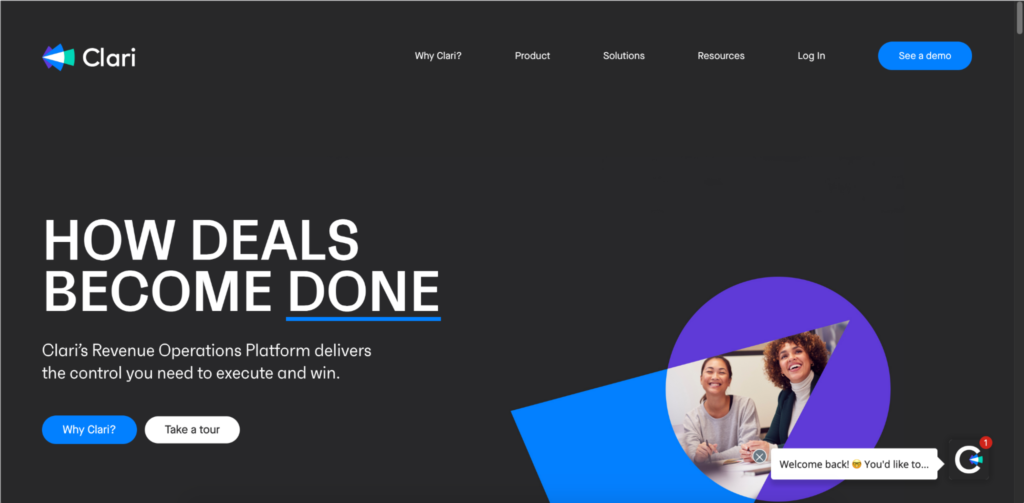
Clari is part sales management software and part sales forecasting tool.
Combining these two capabilities lets sales enablement and management teams optimize the sales process at the individual level and direct overall sales efforts from a higher, strategic level. Having these two datasets together in one place ensures that your tactics and strategy are always aligned.
One last thing: Clari is especially helpful in keeping sales managers and sales enablement teams on the same page, because the tool draws a clear connection between the responsibilities of sales management and enablement.
Sales planning tools are pretty much essential for mapping sales pipelines and creating sales frameworks.
You can do sales planning with a whiteboard or in a spreadsheet. But if you use tools that aren’t built specifically for sales planning, it’s difficult to get a clear, high-level overview of the entire process and make changes accordingly. That’s why sales planning tools are a staple in any sales enablement toolbox.
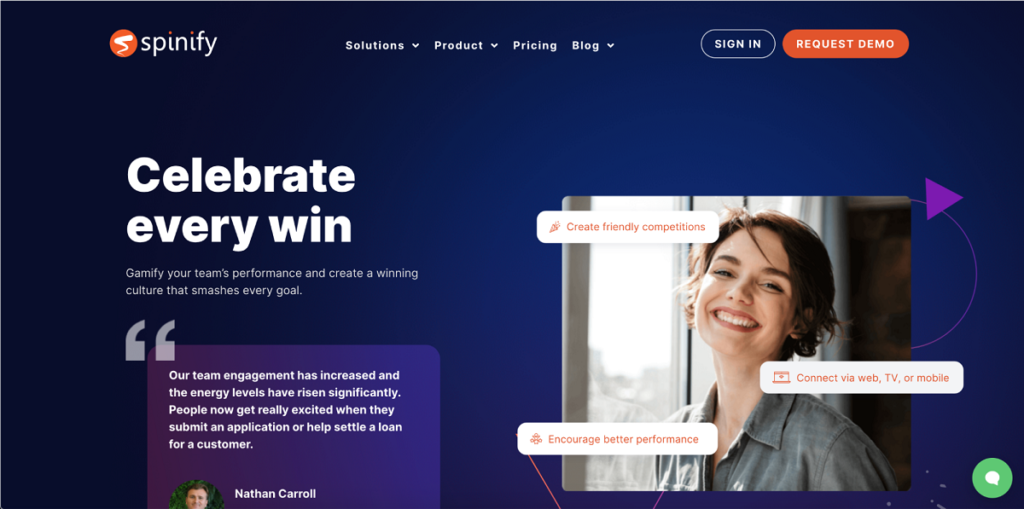
Spinify does the work of strategizing and mapping sales processes. But Spinify also gives you the option to establish milestones and performance goals for each stage of the sales pipeline.
Spinify also has built-in functionality for tracking sales team performance and giving recognition and rewards when reps hit milestones at each stage of the process. This might overlap with your sales management tools. But it won’t step on any toes, so long as your sales management software doesn’t help with your incentives program.
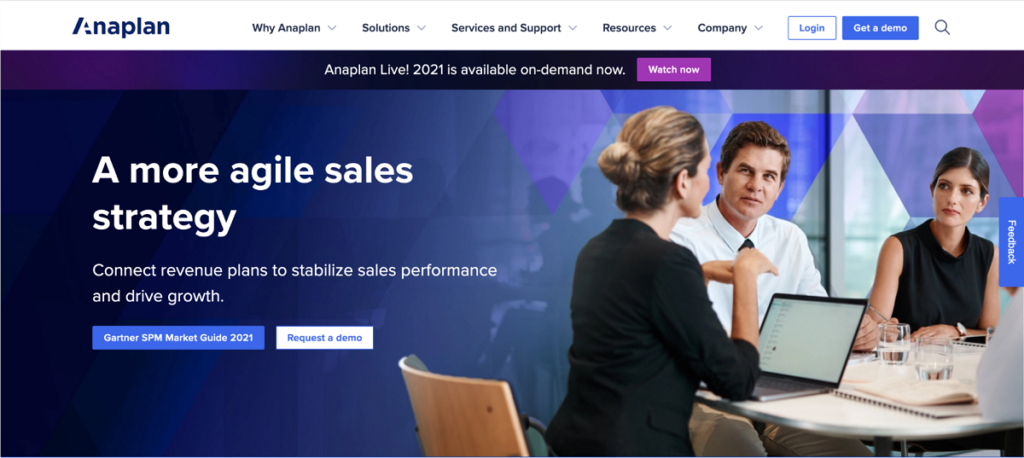
Anaplan is a comprehensive sales software suite that includes sales planning tools. This can be handy because your sales plan automatically gets connected to your sales management and other tools. That makes Anaplan best for organizations that don’t have deeply entrenched systems.
However, the main strength of Anaplan is that the sales planning tool is a great fit for companies that leverage long-term relationships and account based sales models.
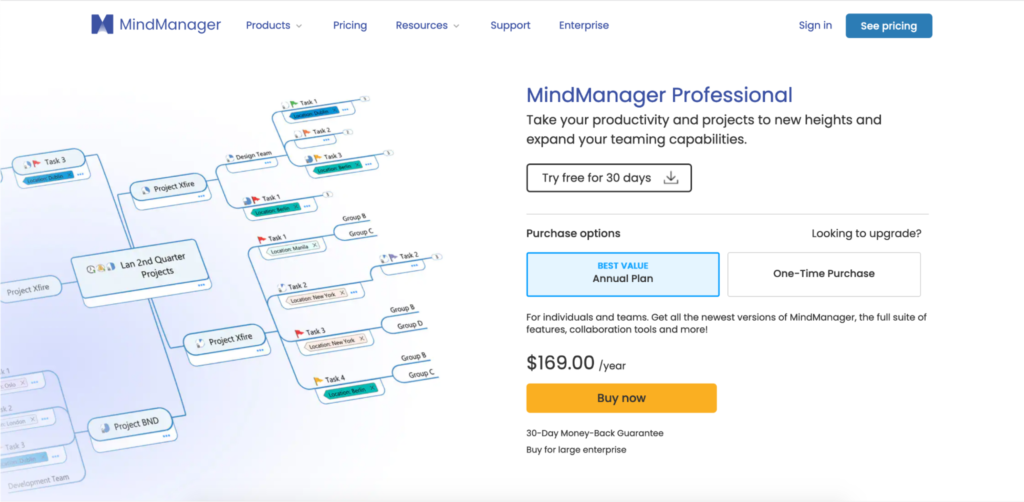
MindManager is a classic planning tool that works like a digital whiteboard. It’s capable of creating tons of mapping models — flowcharts, timelines, funnel charts, matrix diagrams, and more.
MindManager places heavy emphasis on collaboration. The sales maps are cloud-based, so everyone can make changes. The intent is to turn your sales maps into living documents where you can get feedback from everyone. And the pricing structure is more reasonable for smaller organizations than many other sales planning tools.
Simply stated, sales productivity tools help sales teams get more done. That means more sales.
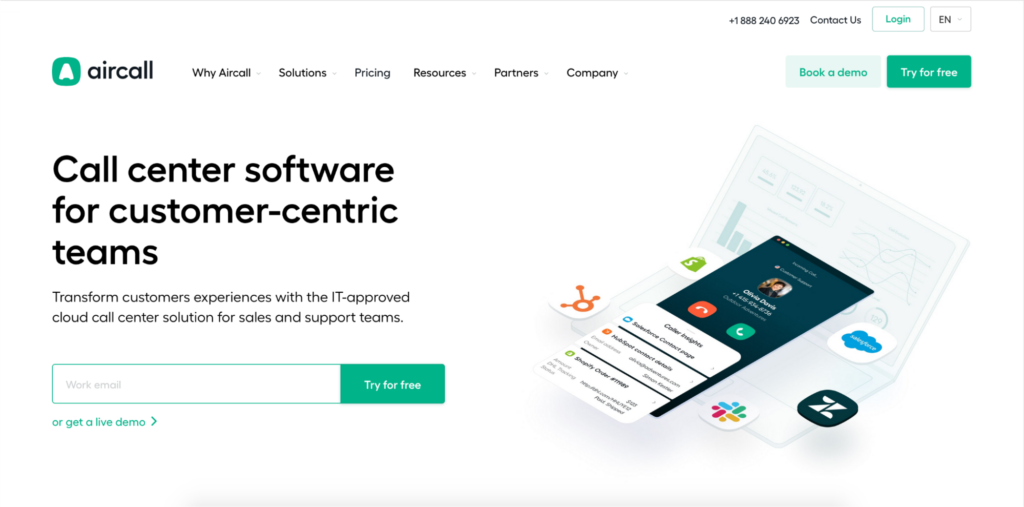
Aircall is a dialer for sales teams that do a lot of selling on the phone. Aircall is a softphone, which means it’s essentially an app that can be installed on any device.
If your teams primarily work from a desk with a company phone, Aircall will work like a standard phone. But it’s especially valuable for sales teams that use both mobile and desk phones. You can also install Aircall on desktop computers to reduce hardware needs.
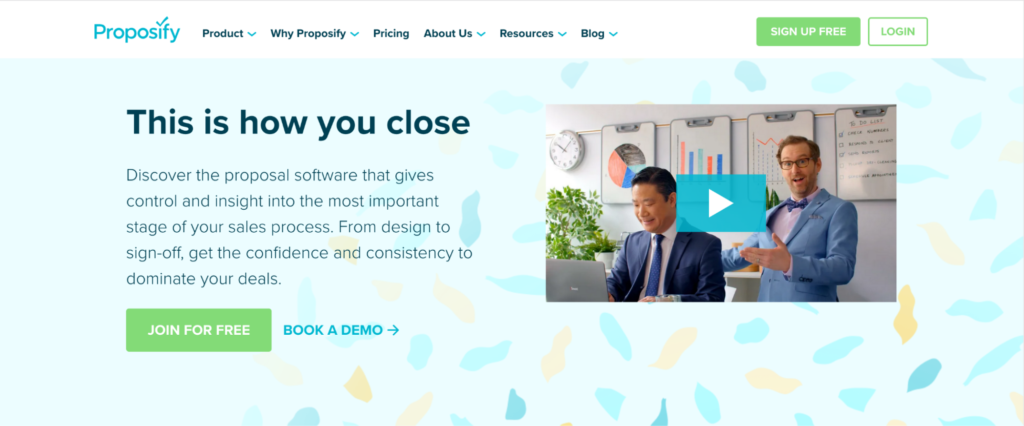
Proposify is for sales teams that need to send proposals as part of the sales process. Proposify enables you to create branded templates that sales reps can use to build and send more proposals.
It’s an excellent tool for building and streamlining a sales system.
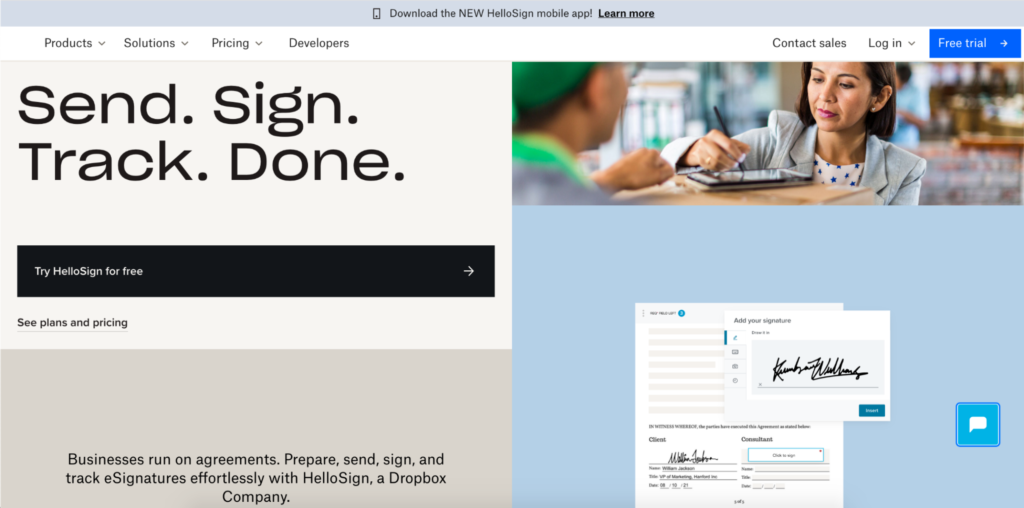
Hellosign is a flexible document signing service that offers a lot of integrations.
Hellosign enables you to create branded document templates, import documents from a whole lot of other sales tools, and automate much of the signing process with scheduling and triggers. Hellosign also has an API that lets you add document signing to websites, which can make getting signatures incredibly quick.
Many sales automation tools share common ground with prospecting tools, since prospecting tools help automate sales prospecting.
However, sales automation tools can be useful for everyone from the sales enablement team to individual sales reps, because these tools automate many common administrative tasks.
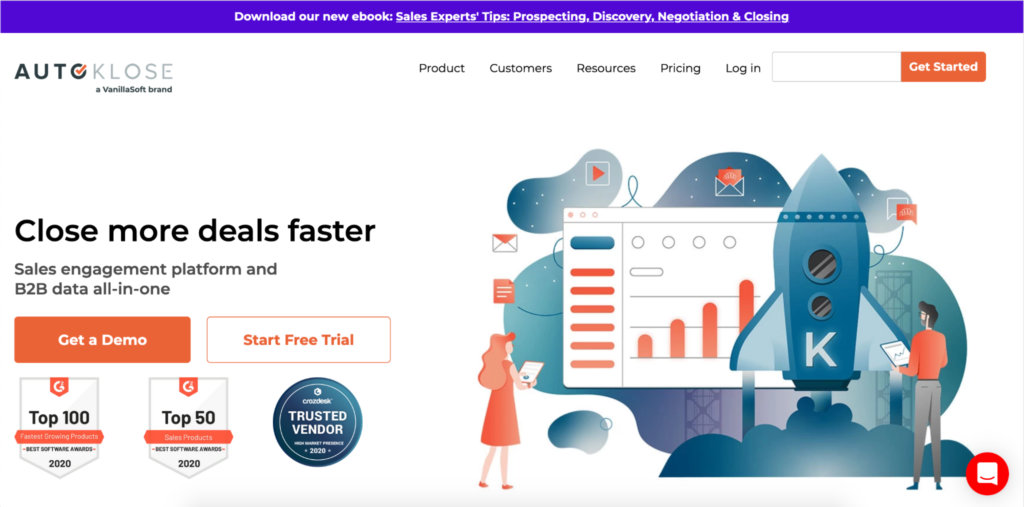
Autoklose is an all-in-one platform that definitely shares space with other sales enablement tools. However, the sales automation capabilities are specifically designed for B2B sales teams.
The automation tools available in Autoklose have functionalities that help keep track of all the contacts in each B2B sales account and automate the process of communicating with multiple decision-makers.
And, an all-in-one sales platform for B2B sales simplifies your sales tech stack.
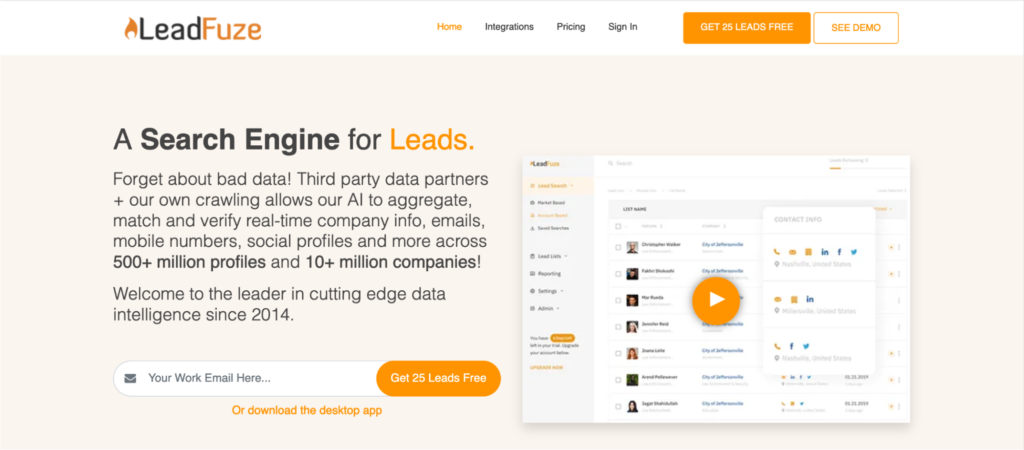
The basic description of LeadFuze is that it automates your CRM data management. Of course, there are a lot of activities involved with CRM data management — data entry, data matching, verification, and so on.
On one level, LeadFuze handles a lot of repetitive, manual tasks. But it also saves time on another level, because it minimizes CRM errors and saves your sales reps from calling the wrong number or reaching out to dead email addresses.
It’s quality control via automation, which saves a lot of resources.
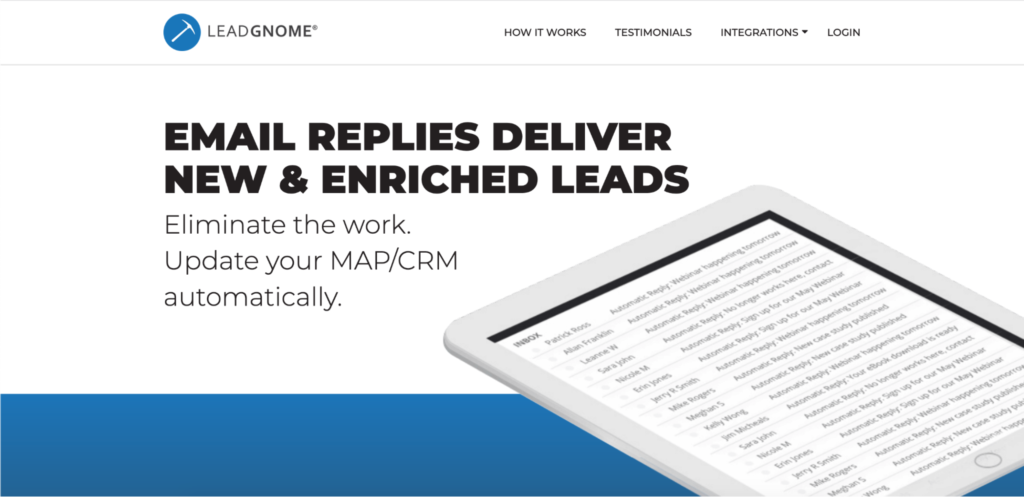
LeadGnome is a data mining automation tool that mines your email databases for sales intelligence. The upshot is that it finds untapped leads in your current email database.
It’s a clever lead generator that works well if your organization collects leads from multiple sources and brings in a lot of unfiltered email leads. LeadGnome is also a decent way to get value from old databases that were built before you put your current sales strategy in place.
Sales intelligence tools are all about making the most of your data. They give you access to wider data pools and help you find usable data points, which feed into your sales analytics tools.
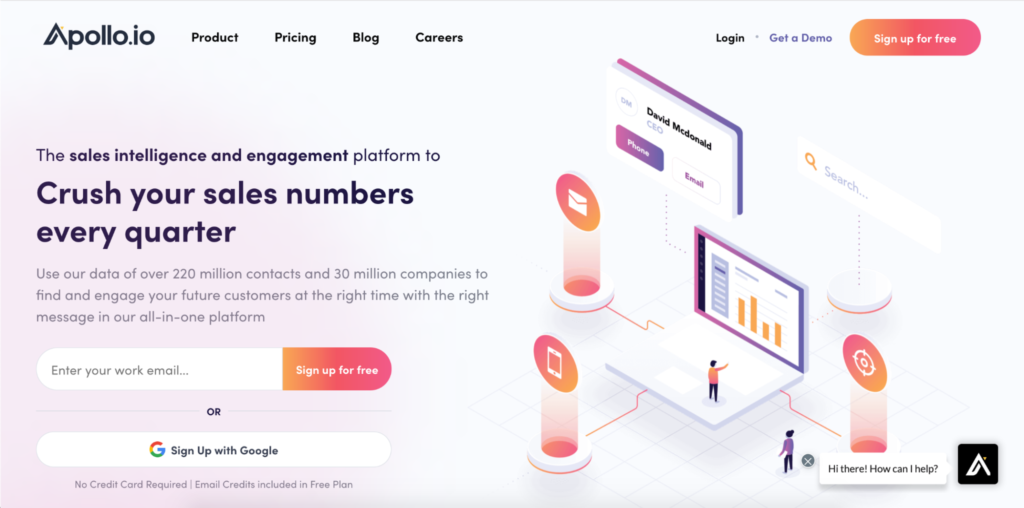
Apollo.io is a data source for outbound sales. It compiles contact data that you can use to flesh out your CRM.
Data sources like Apollo.io are excellent for data verification and supplementation. And this is an especially handy tool if you find that your CRM database has a lot of outdated information.
Apollo.io does their due diligence in terms of compliance. But still, make sure you follow data privacy and protection laws when you use any customer information from a data provider.
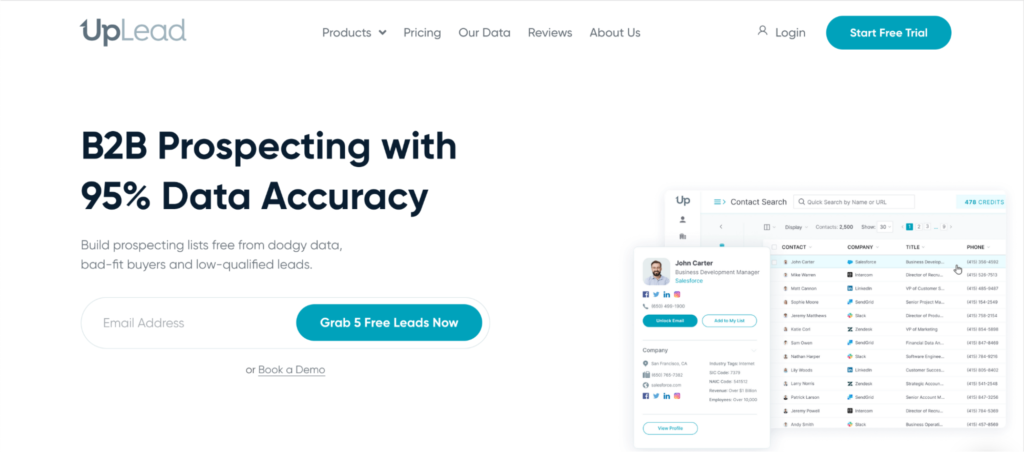
Uplead is similar to Apollo.io. However, this sales enablement tool specializes in supplying B2B contact information.
Fortunately for B2B sales teams, B2B data is relatively safe to use, since it’s often publicly available information. And UpLead has compliance processes. But as we said before, it’s still critical to have your own data compliance standards in order.
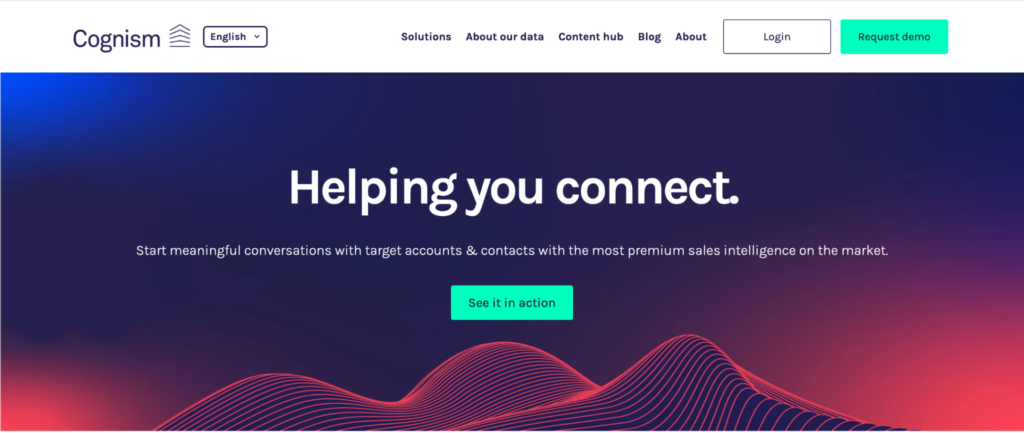
Cognism is unique in that they provide intelligence about entire companies.
Yes, Cognism provides contact data. But it also gives intelligence about developments in prospective client companies and sales trigger events that may indicate buying intent. It’s an impressive data package that helps evaluate the purchasing probability of companies for B2B sales teams.
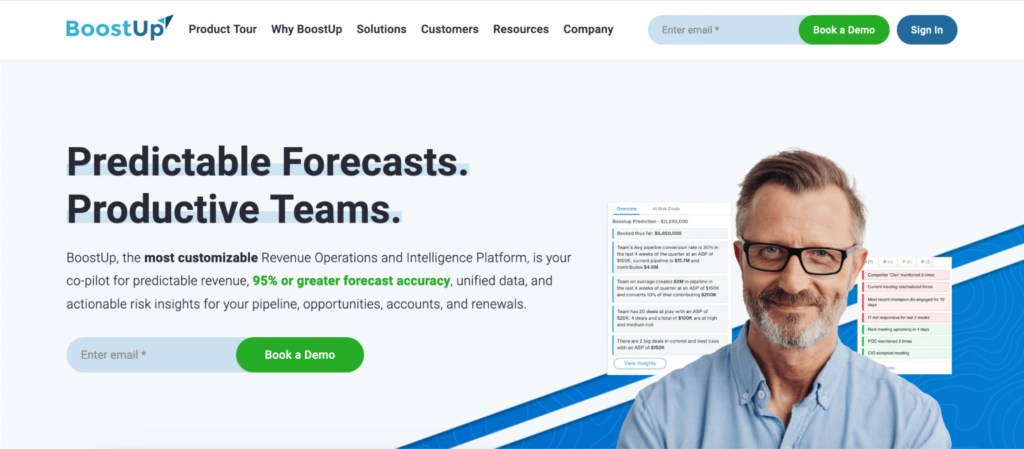
BoostUp focuses on marketwide sales intelligence. It leverages historical sales and market data to create more accurate forecasts, predict sales probabilities, and assess risk. It also generates a lot of business intelligence data that helps optimize overall revenue generation.
As a bonus, BoostUp integrates sales rep behavior data in combination with market data to create predictive models that are customized to your organization.
Sales generate a lot of data. Sales analytics tools help you manage and make the most of all that information.
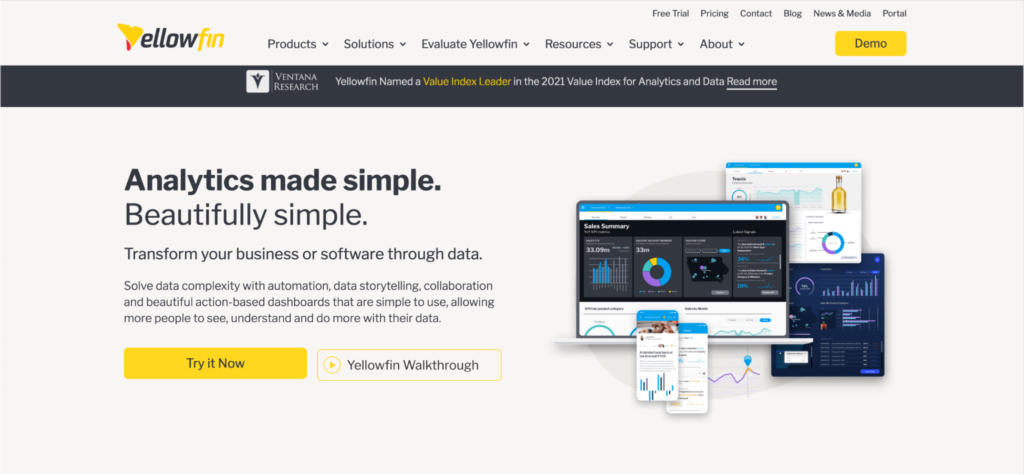
Yellowfin is actually an all around data analytics tool, but it’s perfectly capable of analyzing sales data. Yellowfin works for sales analytics because all the data analytics dashboards are customizable. You choose the data that gets analyzed. Yellowfin crunches the numbers.
This does make for a slightly more complex setup. But it also gives you a lot of flexibility to create data analytics sets and integrate with your marketing team’s analytics, which is a huge benefit from a sales enablement perspective.
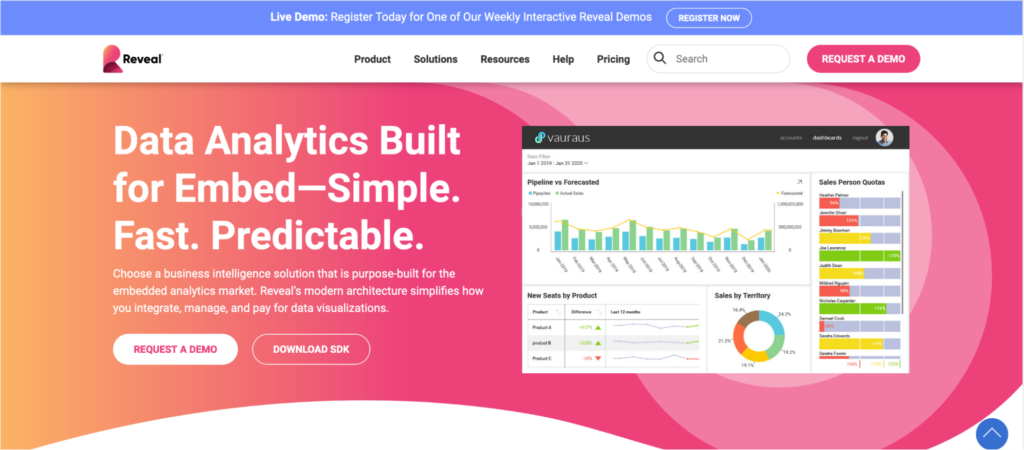
Reveal is another general data analytics tool. But Reveal has better pre-built integrations for sales data compared to Yellowfin.
Of course, this built-in functionality offers slightly less customization in the long term, if you need to create custom analytics sets. Reveal is great for sales enablement teams that need to get started with data analytics, rather than replacing or improving an existing system.
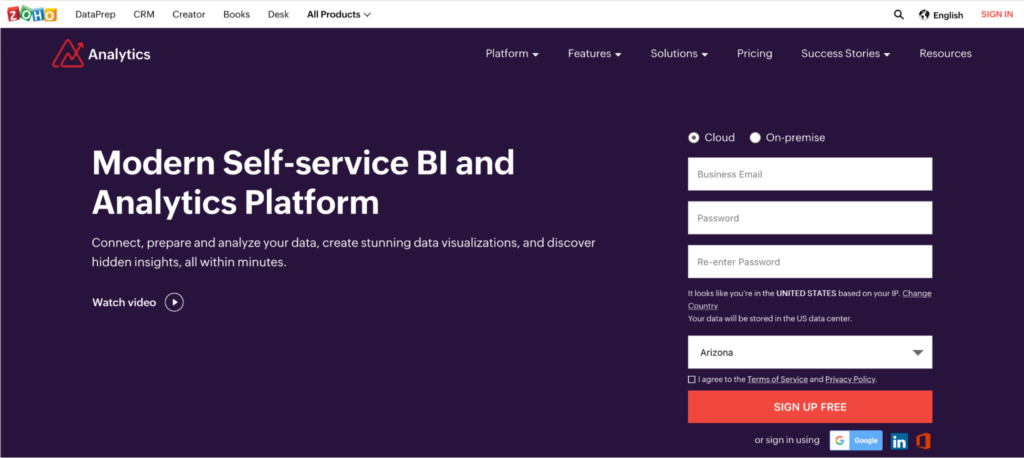
Zoho is one of the most common business software companies, and they produce a lot of sales and marketing software. If you adopt Zoho Analytics as a standalone tool, it works like a traditional data analytics platform.
The nice thing about using Zoho Analytics, or any other Zoho tool, is that Zoho tools integrate relatively seamlessly with other Zoho products. This makes Zoho Analytics a good option if you need multiple sales enablement tools and you want all of them to work well together without much fuss.
Sales enablement requires a broad range of strategies, tactics, and skills. Grab some of these sales enablement tools to help you create efficient sales frameworks and get the best performance from your sales teams.
And while you’re at it, add Biteable to your sales enablement stack. With hundreds of professionally designed video templates, and over 24 million stock clips, images, and one-of-a-kind animations, you’ll make your first video before they can even say, “We met our milestone!”
Make stunning videos
with ease.
Try Biteable now.
